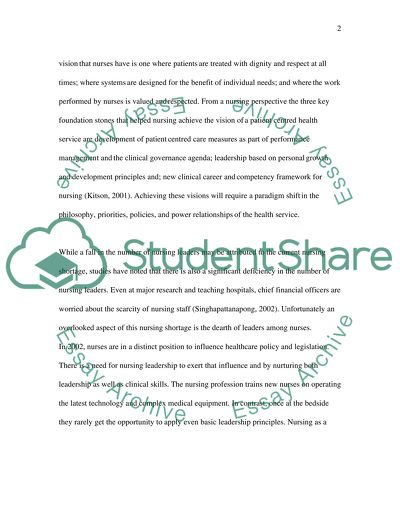Cite this document
(“Leadership in nursing Essay Example | Topics and Well Written Essays - 2500 words”, n.d.)
Retrieved from https://studentshare.org/miscellaneous/1538175-leadership-in-nursing
Retrieved from https://studentshare.org/miscellaneous/1538175-leadership-in-nursing
(Leadership in Nursing Essay Example | Topics and Well Written Essays - 2500 Words)
https://studentshare.org/miscellaneous/1538175-leadership-in-nursing.
https://studentshare.org/miscellaneous/1538175-leadership-in-nursing.
“Leadership in Nursing Essay Example | Topics and Well Written Essays - 2500 Words”, n.d. https://studentshare.org/miscellaneous/1538175-leadership-in-nursing.


